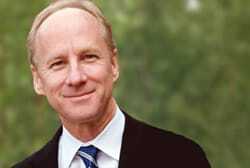This year marks the 75th anniversary of the Urban Land Institute. In 1936, no organization existed in the United States to research, analyze, or encourage responsible patterns for long-term urban growth, or to conduct inquiries into what constitutes sound real estate development projects and practices. The Urban Land Institute was founded in December of that year to fill the knowledge gap, starting a journey of leader-ship in land use and urban development that has now stretched around the world.
Ironically, some of the same factors now shaping the future of our industry and our communities were influencing the nation’s built environment when ULI was established—uncertainty in financial markets, shifting economic growth drivers, changing demo-graphics and household size, and a continuing influx of immigrants. Cities around the country were trying to recover from the Great Depression and position themselves as leaders in an economy then dominated by manufacturing. They were grappling with inner-city neighborhoods in decay as well as new suburbs that would soon face rapid growth.
During the 1930s and 1940s, ULI’s founders, including Cincinnati real estate entrepreneur and first ULI chairman Walter Schmidt and legendary Kansas City developer J.C. Nichols, sought to gain knowledge about operating in this new environment by learning from each other. They would take trains to meet together, unroll their plans, and talk about what was right or wrong with how, what, or where they were building.
For Schmidt, Nichols, and their colleagues, being part of ULI meant sharing knowledge to achieve the best for the built environment. The Institute grew by word of mouth, in the 1940s attracting young leaders such as J.W.“Willie” York, who was building his development career in Raleigh, North Carolina (his son, Smedes, would serve as ULI chairman from 1989 to 1991), and Roy Drachman (ULI chairman from 1970 to 1973), who had started his business in Tucson, Arizona.
Drachman, active in ULI until his death in 2002, recalled advice he received from J.C. Nichols in 1949: “Remain in the ULI as long as you are in the real estate business. Whatever you learn as a result, how-ever you benefit from it, don’t keep it to yourself. Pass it on.”
ULI’s unique knowledge network—and the expectation that as a ULI member, you are obligated to share your mistakes as well as your successes—remains unchanged 75 years later. At this milestone in ULI’s history, the organization’s legacy of leadership in the responsible use of land continues to be shaped by visionaries as dedicated and committed as ULI’s earliest members.
ULI now has nearly 30,000 members worldwide, with 51 district councils in the United States, 16 national councils in Europe and Asia, and primary offices in Washington, D.C., London, and Hong Kong. Serving private investors, lenders, developers, owners, service providers and public sector officials, ULI still serves its original purpose as “the one place” for all market participants to engage in candid conversations, debates, and analyses of market trends, best practices, and future challenges facing urban markets.
As ULI begins its next 75 years, the real estate and land use industry has reached a pivotal point with both formidable challenges and promising opportunities. Ours is a rapidly urbanizing world, one in which the gross domestic product in each nation will be determined by what happens in urban areas. This urbanization, along with economic, societal, and demographic changes and environmental concerns, compels us to rethink the impacts on livability of how we grow, build, and adapt.
ULI is at the forefront of this change, anticipating how our urban areas will ultimately be experienced in terms of meeting the expectations of future generations for livability, amenities, flexibility, mobility and choice. This proactive course is reflected in ULI’s new priorities, approved this summer by ULI’s leader-ship. These include: creating resilient communities; understanding demand and market forces; connecting capital and the built environment through value; promoting intelligent densification and urbanization; and integrating energy, resources, and uses sustainably.
Each of these new priorities incorporates some aspect of housing, infrastructure, sustainability, capital markets, and industry leadership—all issues that provide content for ULI’s products, programs, and activities. However, the new priorities are more in sync with ULI’s tenets and values, and they better characterize how ULI is achieving its mission. They are helping lay the groundwork for what ULI will achieve during its next 75 years.
Certainly, we have much to celebrate with this milestone anniversary. We can take pride in the fact that our goal of excellent community design and building can be traced back to the organization’s earliest years. But, to borrow a quote from Nichols, “An intelligent city plan... does not forget the greater needs of tomorrow in the press of today. It is simply good, practical sense.” Similarly, ULI must plan for the cities of tomorrow.
In this regard, the Institute has issued What’s Next?, a new publication that examines demographic, economic, and environmental factors that are changing what will be built, where it will be built, and how it will be financed. This report is kicking off a yearlong series of events, including a competitive “urban innovation grant” program for district councils and national councils to engage in activities focused on how best to prepare ULI members and their businesses for the next 75 years.
Another highlight of our anniversary plans: on December 14, 2011, we will host a worldwide ULI Day to commemorate the Institute’s official charter date. Mayors in cities around the globe will recognize ULI’s leadership contributions, setting the stage for future community building partnerships.
Over the next 12 months, we will be funding innovative initiatives, capturing the conversation, documenting the activities, and compiling resources for ULI’s 2012 Fall Meeting in Denver, with the endgame being a better-informed approach to land use leadership for the 21st century. It is a fitting way to build on ULI’s time-tested tradition of sharing knowledge.
There is much to look forward to as ULI turns 100, even 150, and it is important to remember that what we plan, design, renovate, and build now must still be appealing in 2036, and worth preserving in 2086. As the real estate and land use industry continues to evolve, ULI can keep its edge by encouraging members to keep learning from each other, and to “pass it on.”



